Gluten Free Perfect Pie Crust Recipe
Updated Feb 15, 2021, Published Nov 08, 2013
This post contains affiliate links. Please see our disclosure policy.
Bakers, start your ovens! Fall is what I consider to be the beginning of pie season. The temperatures start to drop, crisp apples and pears fill the produce shelves and a freshly baked pie seems to be the perfect way to cozy-up a chilly evening. And before you know it we launch into Thanksgiving and the beginning of Holiday Season. I ask you – what is Thanksgiving without pumpkin pie?
For many years after converting to a gluten free diet I made crust-less pies and was perfectly happy. After all a crust-less pie you can safely eat is better than a pie with crust you can’t! But as time went by, I started to resent my crust-less life and started using nuts and gluten-free cookies as a base for my pies. Nothing wrong with that and in fact in some cases, such as my chocolate peanut butter pie, a nut crust is the ideal choice. But what was missing for me was the OTHER choice – a white, flaky, traditional pie crust just like Grandma used to make but without the gluten. So I embarked on a mission to make the perfect gluten free pie crust. The first thing I learned is you can’t let pie crusts intimidate you. It is not only possible to make a great gluten-free pie crust, it is completely do-able and many of those who have tried mine, say they prefer my gluten-free crust to regular wheat crusts they have had.
Here are my tips for making the perfect gluten free pie crust:
1. Cold, cold, cold! Get your ingredients cold before using them. Cut up your butter or shortening into small pieces and pop it in the freezer for 15 to 30 minutes before starting your pastry. Put ice cubes in your water for a good 10 minutes before using it to really chill it down.
2. Use a food processor. The speed with which the food processor can combine the ingredients and cut in your butter or shortening is so much faster than if you do it by hand and results in a flakier crust. Of course if you don’t have a food processor, just cut the shortening or butter in by hand but work quickly and don’t over do it. Bigger pieces of butter or shortening are not only OK, but preferred.
3. Be skimpy on the water. The biggest mistake most people make in preparing pie crusts (whether it be gluten-free or not) is adding too much water. Add just enough so that the ingredients hold together when squeezed in your hand. Too much water will result in a tough crust.
4. Give it a rest! Let your pie crust dough rest for at least an hour before rolling. Many people think this is to let the gluten rest, which would make no sense in a gluten-free recipe, but in truth what you are doing is letting the moisture distribute evenly. Never skip the resting period. Here’s an easy tip – pour your crumbly mixture into a large food storage bag and shape the dough into a disk using the bag to help you – it is less messy this way. Then just pop the bag into the fridge for the crust’s resting period.
5. Extrude – don’t roll. Gluten-free pie crust is more fragile than regular pie crust as it lacks the sticking power of the gluten. It is much easier to employ the “extrusion method”. Simply place your dough on a piece of wax paper that is dusted lightly with gluten-free flour, then sprinkle a little more flour on the dough and top with another piece of wax paper and roll it out. This will help keep your crust in one piece. Using the wax paper also helps in transferring the dough to the pie plate. If a piece falls off or breaks, just pinch it back together, don’t be afraid to show your pie crust who’s boss.
6. Use great ingredients. The sum of the parts will only be as good as what you put in it. Start with a good, pastry quality all purpose gluten-free flour blend that is not grainy or cardboard tasting. For a perfect-just-like-Grandma-used-to-make pie crust you need a flour blend that has a high starch content and some xanthan gum. You need the crust to be flaky but still stick together. If you don’t have a brand you like then make your own using either super fine or Asian flours, they are milled much more finely than most. Also use the best quality butter you can buy and always use either kosher or fine sea salt. If you can not have dairy then substitute the butter with all vegetable solid shortening. In my opinion, the butter flavored shortenings do not produce as good a flavor as the regular, non-flavored. I prefer to use Organic All Vegetable Non-hydrogenated shortening from Spectrum. And yes, I add a bit of regular sugar to my pie crusts, it helps with browning and after all – it’s dessert!
7. To “blind bake” (pre-bake the crust for use when the filling will not be baked such as cream and pudding pies) your crust place a piece of parchment or foil on top of the crust and fill with either pie weights or dried beans. I use dried beans, far less expensive and they can be used over and over again.
This recipe is for sweet pies, if using for a savory dish such as quiche, cut the sugar down to 1 teaspoon. At the end of the recipe is a variation for a Chocolate Pie Crust which is a unique twist for pudding-type or berry pies.
Shop This Post

Gluten Free Perfect Pie Crust Recipe
Ingredients
- ½ cup unsalted butter or solid, all vegetable non-dairy shortening
- 2 to 4 tablespoons cold water
- *1¼ cups All Purpose Gluten Free Flour Blend plus more for rolling
- 1 teaspoon kosher or fine sea salt
- 2 tablespoons sugar
Instructions
- Cut butter into ½ inch pieces and place in the freezer for 15 – 30 minutes.
- Add some ice cubes to the water and let it get ice cold while preparing the dry ingredients.
- Combine the flour blend, salt and sugar in the bowl of a food processor. Pulse 5 -6 times to combine. Add the butter and pulse 6 -8 times or until the mixture resembles coarse meal with some pea size pieces of butter.
- With processor running, add ice water 1 tablespoon at a time until the mixture just barely starts to clump together. If you pinch some of the crumbly dough together and it holds then you have enough water, if not add more a little at a time. You do not want to add any more water than is absolutely necessary.
- Remove the dough from the machine and form into a disk. Wrap the disk in plastic wrap and refrigerate for at least one hour or for as long as 2 -3 days. Since the dough is so crumbly and does not hold together at this point, I find it easier (and far less messy) to pour the mixture into a large food storage bag and form it into a disk using the bag to help. Then just close up the bag and put it in the fridge. Remove dough from fridge 5 minutes before rolling.
- To roll the dough, lay a piece of waxed paper on a work surface and sprinkle with some flour blend. Lay the chilled disk on the floured paper, sprinkle with some more flour and lay on another piece of waxed paper. Roll the dough into a circle approximately 12 inches wide. Remove the top sheet of waxed paper and carefully transfer into a 9 inch pie plate and remove the waxed paper. Push the dough very gently down so it lines the bottom and sides of the pie plate. If the dough splits or breaks apart just push it back together. Trim the edge of the pie crust to about ½ – ¾ inch over hang. Tuck the overhang under and pinch the dough into a decorative finish.
To Pre-bake (or Blind Bake) a pie crust:
- Sometimes a recipe will call for a pre-baked or blind baked pie crust, here’s how to do that.
- Freeze the pie crust in the pie plate for at least 30 minutes.
- Preheat oven to 350 degrees.
- Place a piece of parchment paper (or foil) in the bottom and up the sides of the pie crust. Fill with dried beans, rice or pie weights. (I prefer dried black beans as they help distribute the heat better and are much less expensive than pie weights. I use the same beans over and over.) Bake the crust for 20 minutes. Remove the weights and waxed paper, poke a few holes in the bottom of the crust using a fork and return to the oven for 10 minutes or until golden brown.
- Let pie crust cool completely before filling.
Notes
Chocolate Pie Crust Variation: Add 1 ½ tablespoons cocoa powder to the dry ingredients and proceed as above. The dough may require just a tad more water. Make sure to brush off all the excess flour blend after rolling to keep the dark color.
Nutrition
Nutrition information is automatically calculated, so should only be used as an approximation.
The views and opinions expressed on this blog are purely the blog owners. This blog accepts free manufacturers’ samples and forms of cash advertising, sponsorship, paid insertions or other forms of compensation.


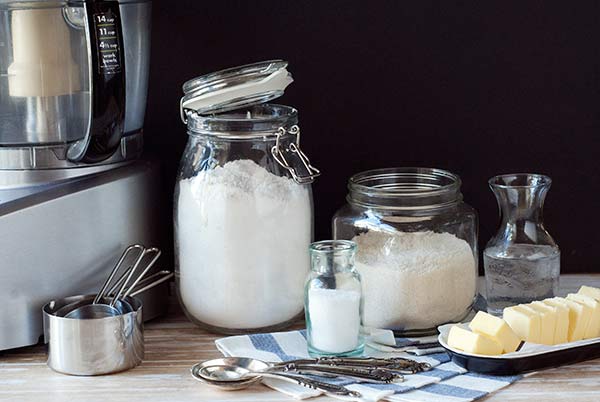
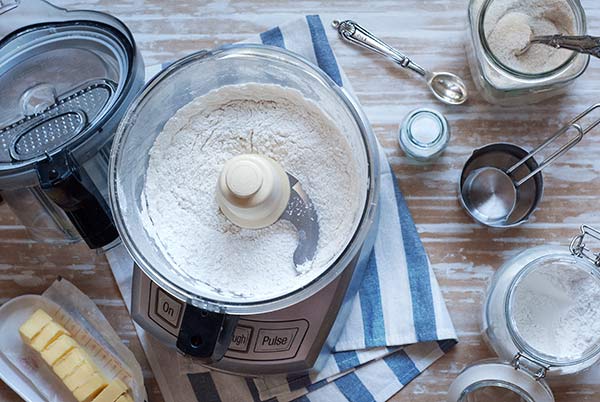
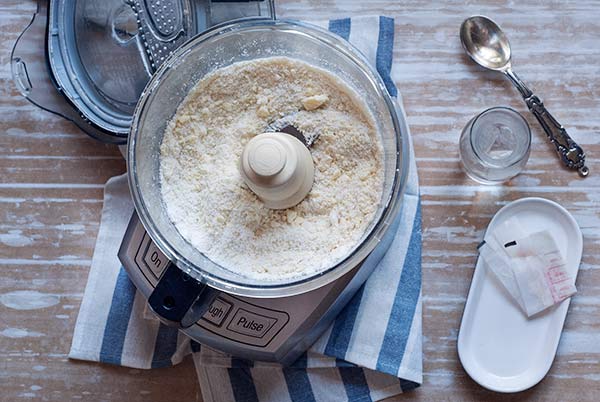
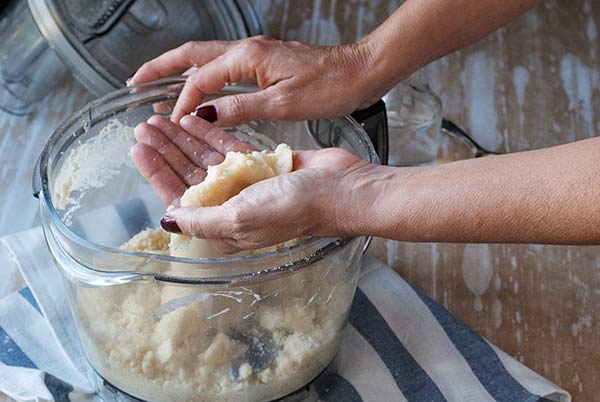
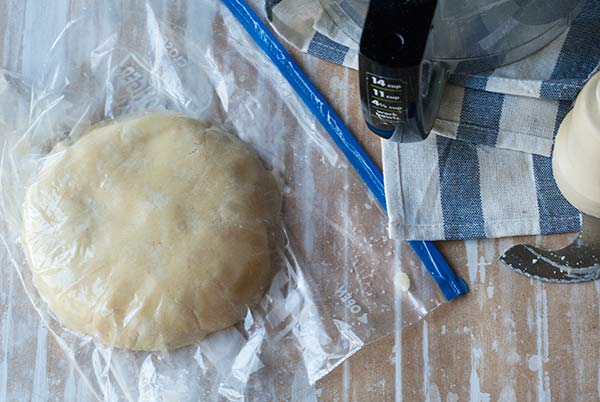
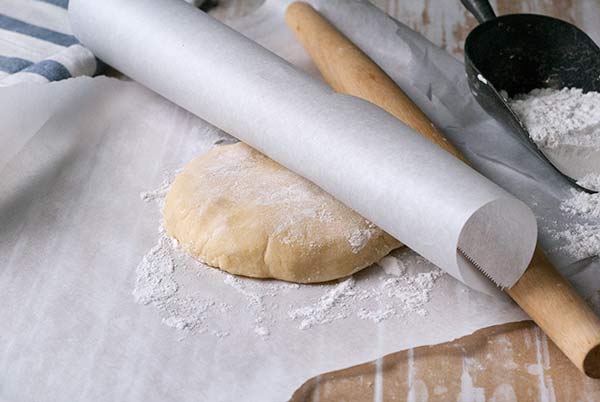
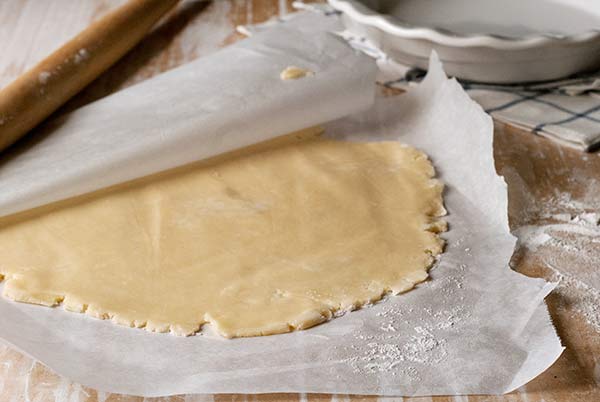
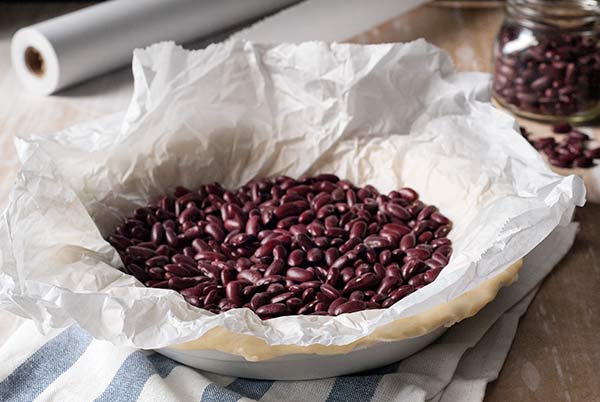
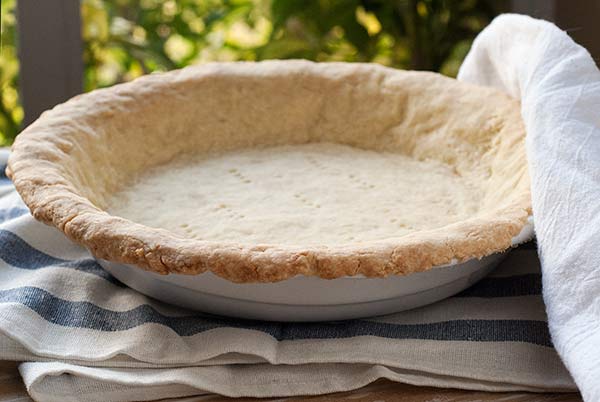

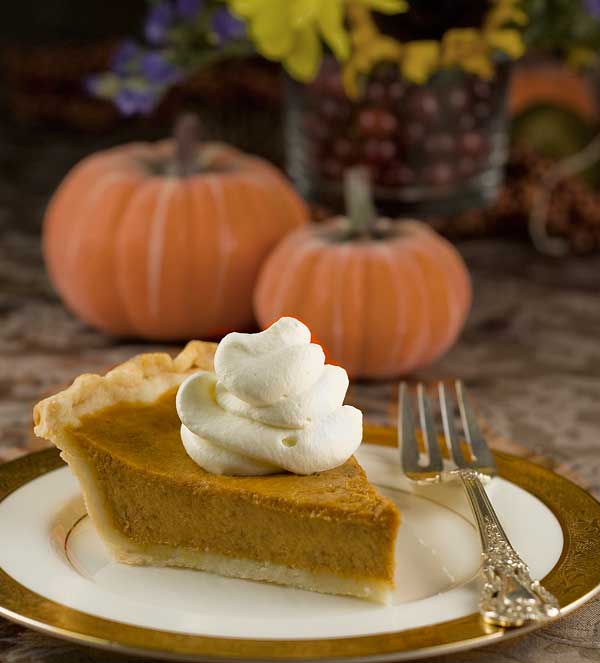












Carol, thanks this looks like a fabulous recipe. I’ve been searching for a good GF pie crust for months. I do have a question for you. What is your thought on using packaged “Gluten Free Baking Flours” like Bob’s Red Mill? They say you can use it 1:1 like regular all purpose flour.
Ok, first of all I have to say that I don’t personally care for Bob’s Red Mill all purpose gluten free flour blend because of the bean taste – having said that, if you like it, it should be totally fine. Just use cup for cup.
I’m curious if you have ever prebaked and frozen this crust? Or made ahead and frozen, then thawed to assemble pies? I’m in charge of pies for Thanksgiving, so lots riding on this one :)
I have never frozen it but I do make it ahead of time – up to a week. I wrap it well, put in the fridge and take it out to let the chill come off before rolling. I have also rolled it out, put in the pie pan and refrigerated it that way, covered in plastic wrap – several days ahead. I see no reason why you could not roll it, line the pie plate , wrap and freeze. Just let it thaw at room temp before filling.
Thanks! I love how you always respond to questions! You’re the best!
I made this crust (times four) for an early Thanksgiving. I am making it again for tomorrow. It will continue to by my go to recipe. Thank you so much for posting amazing recipes. My family raved about the pies.
I like this no fuss crust. Saw so many super complicated with many GF free flours. Many with nuts as sub flour with we also cannot have. I am forced into GF long Thanksgiving weekend, A guest of ours has insensitivities we got tree nuts allergies so I like how you categorize your recipes. It was exciting to explore GF and rework th emenu but soon became ovewhelming and frustrating so I very much appreciate the simplicity with this crust and it looks amazing!
Thank you and have a fabulous Thanksgiving!
Hi Carol,
I’m trying to make a gluten free no wheat flour pie crust for my husband / to make Blueberry pie he’s allergic to wheat flour. Do you have any really good recipes for Blueberry Pie low carb and gluten free.
thank you
Hi Evelyn,
Well this recipe is totally wheat and gluten free for the pie crust, you now just need a filling that fits. I don’t have one up my sleeve at the moment but I am sure you could google low carb blueberry pie and find a suitable filling.
Happy Thanksgiving!
Carol
I do alot of low carb/sugar free recipes. The best thing I have found in baking is the use of splenda. For blueberry pie filling, I use a standard blueberry pie filling recipe and substitute splenda for the sugar … almost cup for cup, but… I cut back the amount by 1/2 – 1/4 cup, then I either use clear jel or tapioca to thicken it. I find tweaking the spices will allow you to cut back on the sweetness.
Thanks Pattie. I love that tip about tweaking the spices allowing you to cut back on sugar!
I followed all the steps and granted, I’m no baker, but the crust… turned out wonderful! I never thought I’d bake a pie in my life, but didn’t want my fiancee to miss out on dessert for Thanksgiving. I’m not allergic to gluten, and had more failures at baking gluten-free than successes, but I won’t mind gluten-free if it’ll be like this. You’ve won me over, and renewed by optimism.
Thank you Cary! You have made my day!!!!
xo,
carol
Thank you for this recipe! The possibilities are endless when you understand how to create this, and implement it with many types of filling.
Thank you Stacy, enjoy!
Can this be used to cover the pie too?
It can but I find that two crusted pies are a bit more difficult – what I do is roll out the dough for the top crust, cut it into shapes with cookie cutters or a glass and then layer the cut out dough pieces onto the pie – it is so pretty and soooo much easier!
That’s the best idea ever… it’s always been impossible for me to do a covered gluten free pie… cutting out pieces of the dough to top it with is genius! I’m trying out your recipe tomorrow. Thanks : )
Victoria
Forever Fashionably Late
You are very welcome! Enjoy.
Carol… thank you, thank you, thank you!! This is THE BEST gluten free thing I have made in 5 years of trying to be GF!! It turned out BEAUTIFULLY. I consider myself to be a reasonably good baker and have adapted to the GF baking life pretty well, but homemade GF pie crust I had yet to conquer. Admittedly, even wheat pie crust is not my thing… crust is intimidating!! However, after just one use, I must say that I love, love, love this pie crust recipe!! My son is 10 and has many allergies including milk (I used margarine in this recipe, which I don’t love, but it STILL turned out great!) and wheat. I made this for a lemon meringue pie and it turned out BETTER than the wheat crust I used for the other pie for the non-GF-guests at our party (admitted, it was store-bought, see note above!)!! AMAZING!! Thank you so much… and my son thanks you as well. We will be having a lot more things with crust from now on! Hurrah! :)
Yay! So happy that you loved it! My gluten-eating family members actually prefer this crust to wheat based :) Thanks for letting me know!
Hi – love the recipe but am wondering why the crust is just falling apart? It’s still cooling so maybe it will firm up a bit after? I’m just wondering if it will hold it’s shape once the quiche ingredients go in and bake. Would an egg have helped? There’s usually an egg in the traditional pate brisee recipes but it’s omitted in most gf recipes. I did add xanthum (sp?) gum since my gf mix did not have it. Thanks for any insight!
What kind of flour are you using? If it doesn’t have a high starch content, that would be the reason. I never put egg in mine, but if there is not enough starch in your flour blend you could try, it would certainly help hold it together.
I’ve been experimenting with boiling water pastry, which is tough enough to cook meat pies in, but not tender enough for a good dessert. My usual all-purpose flour mix is 4 parts white rice flour + 1 part sweet rice flour.
I’m putting this on my list.
Sounds intriquing!